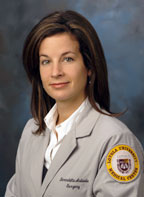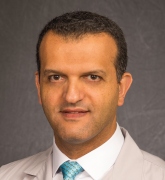Managing Central Venous Access during a Healthcare Crisis. Journal Article
Local Library Link: Find It @ Loyola
| Authors: | Chun, TT; Judelson, DR; Rigberg, D; Lawrence, PF; Cuff, R; Shalhub, S; Wohlauer, M; Abularrage, CJ; Anastasios, P; Arya, S; Aulivola, B; Baldwin, M; Baril, D; Bechara, CF; Beckerman, WE; Behrendt, CA; Benedetto, F; Bennett, LF; Charlton-Ouw, KM; Chawla, A; Chia, MC; Cho, S; Choong, AMTL; Chou, EL; Christiana, A; Coscas, R; De Caridi, G; Ellozy, S; Etkin, Y; Faries, P; Fung, AT; Gonzalez, A; Griffin, CL; Guidry, L; Gunawansa, N; Gwertzman, G; Han, DK; Hicks, CW; Hinojosa, CA; Hsiang, Y; Ilonzo, N; Jayakumar, L; Joh, JH; Johnson, AP; Kabbani, LS; Keller, MR; Khashram, M; Koleilat, I; Krueger, B; Kumar, A; Lee, CJ; Lee, A; Levy, MM; Lewis, CT; Lind, B; Lopez-Pena, G; Mohebali, J; Molnar, RG; Morrissey, NJ; Motaganahalli, RL; Mouawad, NJ; Newton, DH; Ng, JJ; O'Banion, LA; Phair, J; Rancic, Z; Rao, A; Ray, HM; Rivera, AG; Rodriguez, L; Sales, CM; Salzman, G; Sarfati, M; Savlania, A; Schanzer, A; Sharafuddin, MJ; Sheahan, M; Siada, S; Siracuse, JJ; Smith, BK; Smith, M; Soh, I; Sorber, R; Sundaram, V; Sundick, S; Tomita, TM; Trinidad, B; Tsai, S; Vouyouka, AG; Westin, GG; Williams, MS; Wren, SM; Yang, JK; Yi, J; Zhou, W; Zia, S; Woo, K |
| Article Title: | Managing Central Venous Access during a Healthcare Crisis. |
| Abstract: | INTRODUCTION: During the COVID-19 pandemic, central venous access line teams were implemented at many hospitals throughout the world to provide access for critically ill patients. The objective of this study was to describe the structure, practice patterns and outcomes of these vascular access teams during the COVID-19 pandemic. METHODS: We conducted a cross sectional, self-reported study of central venous access line teams in hospitals afflicted with the COVID-19 pandemic. In order to participate in the study, hospitals were required to meet one of the following criteria: a) development of a formal plan for a central venous access line team during the pandemic, b) implementation of a central venous access line team during the pandemic, c) placement of central venous access by a designated practice group during the pandemic as part of routine clinical practice, or d) management of an iatrogenic complication related to central venous access in a patient with COVID-19. RESULTS: Participants from 60 hospitals in 13 countries contributed data to the study. Central venous line teams were most commonly composed of vascular surgery and general surgery attending physicians and trainees. Twenty sites had 2,657 lines placed by their central venous access line team or designated practice group. During that time, there were 11 (0.4%) iatrogenic complications associated with central venous access procedures performed by the line team or group at those 20 sites. Triple lumen catheters, Cordis® catheters and non-tunneled hemodialysis catheters were the most common types of central venous lines placed by the teams. Eight (14%) sites reported experience placing central venous lines in prone, ventilated patients with COVID-19. A dedicated line cart was used by 35 (59%) of hospitals. Less than 50% (24, 41%) of the participating sites reported managing thrombosed central lines in COVID-patients. Twenty-three of the sites managed 48 iatrogenic complications in patients with COVID-19 (including complications caused by providers outside of the line team or designated practice group). CONCLUSIONS: Implementation of a dedicated central venous access line team during a pandemic or other healthcare crisis is a way by which physicians trained in central venous access can contribute their expertise to a stressed healthcare system. A line team composed of physicians with vascular skill sets provides relief to resource-constrained ICU, ward, and emergency medicine teams with a low rate of iatrogenic complications relative to historical reports. We recommend that a plan for central venous access line team implementation be in place for future healthcare crises. |
| Journal Title: | Journal of vascular surgery |
| ISSN: | 1097-6809; 0741-5214 |
| Publisher: | Mosby, Inc |
| Date Published: | 2020 |


